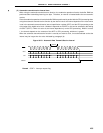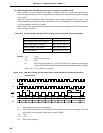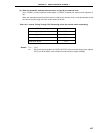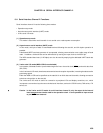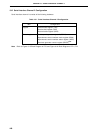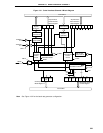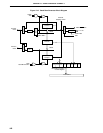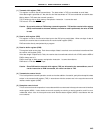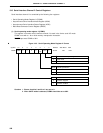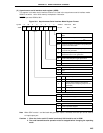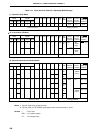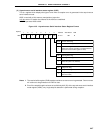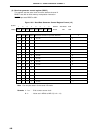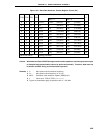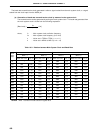
443
CHAPTER 19 SERIAL INTERFACE CHANNEL 2
(1) Transmit shift register (TXS)
This register is used to set the transmit data. The data written in TXS is transmitted as serial data.
If the data length is specified as 7 bits, bits 0 to 6 of the data written in TXS are transferred as transmit data.
Writing data to TXS starts the transmit operation.
TXS is written to with an 8-bit memory manipulation instruction. It cannot be read.
TXS value is FFH after RESET input.
Caution Do not write a data to TXS during a transmit operation. TXS and the receive buffer register
(RXB) are allocated to the same address, and when a read is performed, the value of RXB
is read.
(2) Receive shift register (RXS)
This register is used to convert serial data input to the RxD pin to parallel data. When one byte of data is
received, the receive data is transferred to the receive buffer register (RXB).
RXS cannot be directly manipulated by a program.
(3) Receive buffer register (RXB)
This register holds receive data. Each time one byte of data is received, new receive data is transferred from
the receive shift register (RXS).
If the data length is specified as 7 bits, the receive data is transferred to bits 0 to 6 of RXB, and the MSB of
RXB is always set to 0.
RXB is read with an 8-bit memory manipulation instruction. It cannot be written to.
RXB value is FFH after RESET input.
Caution Since RXB and the transmit shift register (TXS) are allocated to the same address, even if
a write instruction to RXB is executed, the value is written to TXS.
(4) Transmission control circuit
This circuit performs transmit operation control such as the addition of a start bit, parity bit and stop bit to data
written in the transmit shift register (TXS) in accordance with the contents set in the asynchronous serial
interface mode register (ASIM).
(5) Reception control circuit
This circuit controls receive operations in accordance with the contents set in the asynchronous serial interface
mode register (ASIM). It also checks errors such as parity error during a receive operation, and if an error
is detected, sets a value in the asynchronous serial interface status register (ASIS) in accordance with the
error contents.



